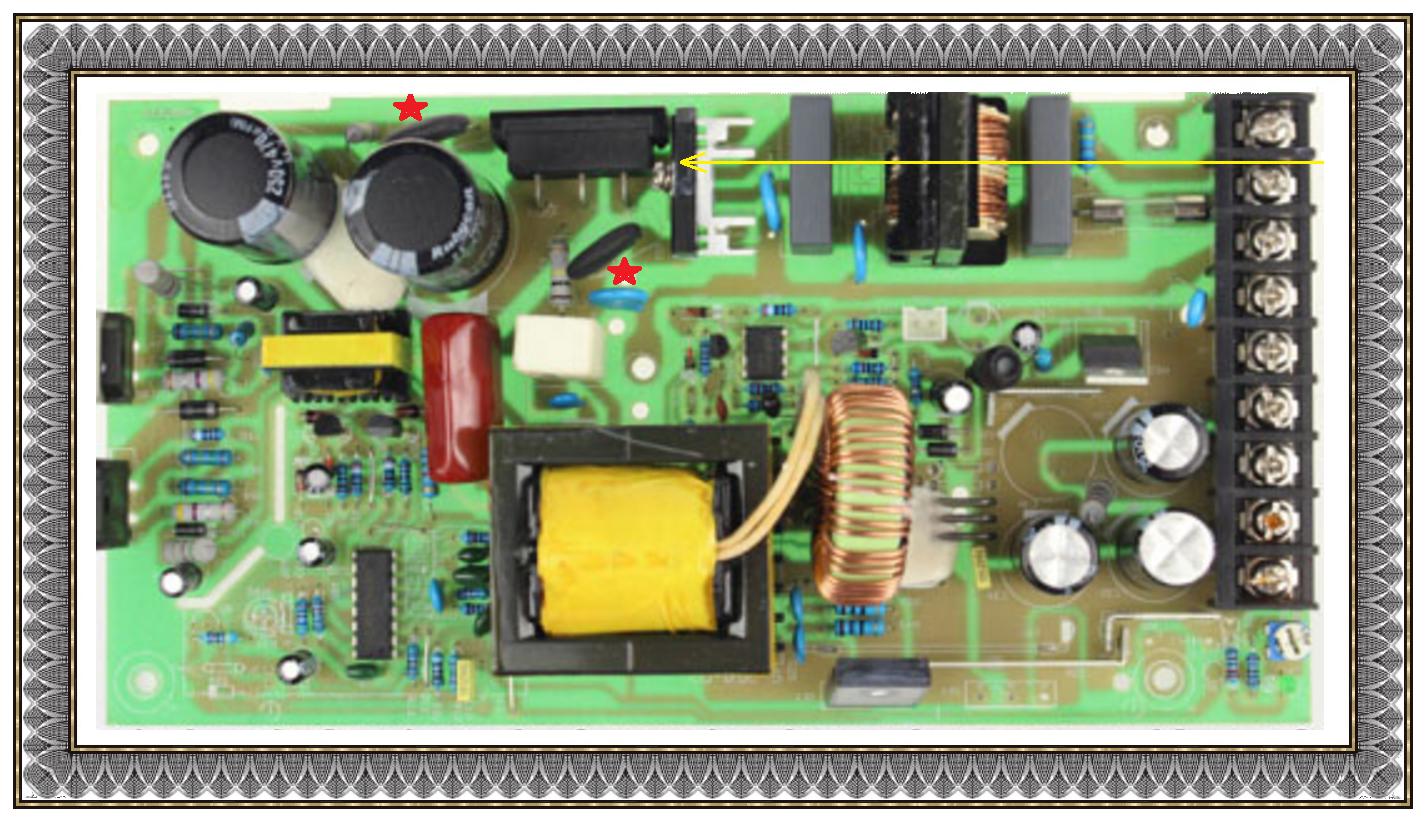Discoveryellow
- May 23, 2016
- 7
- Joined
- May 23, 2016
- Messages
- 7
I have a S-360-12 power supply unit that I got brand new on eBay for a nifty $20. Unfortunately it suddenly stopped working today. I was nearby when I heard a gently but clear "pop" and the LED lights went out.
Upon cracking the unit open I found a circular component (see attached photo) boobing around loose inside and a fairly obvious location on the PCB (ever so slightly and barely visibly browned but with solder looking like it had melted) where it came from. As the component was nearly cracked in half the only marking visible were "TC" and a "5" on the line below. Initially I though it was a large high voltage ceramic capacitor. However upon examining a similar lower wattage LED strip power supply unit (still in working order) I found a slightly smaller component labeled "NTC 5D-11" located in the same general area on the PCB next to AC input line.
From half an hour of Web search I am almost confident the blown up part in my S-360-12 LED power supply is a thermistor. But unfortunately I can neither confirm with 100% it is, nor can I know for sure the marking it had. I suspect it was a "5D-15". Can anyone help confirm if (a) it was indeed a thermistor that blew up and (b) that it is a 5D-15?
I am looking for some nomenclature / lists of thermistors to see how they are labeled and organized to understand what the "5D" and "15" stand for? Should I look for a "better" replacement? Also where can I get one in a timely manner? (Usually I get parts from China via eBay, but I tend to plan my projects and needs weeks in advance to allow for shipping times. Local RadioShack is a joke. I live in the nation's capital.)
Also any ideas why would it blow up like this? I have been running a constant 12A load for 16 hour a day for about 5 weeks since I got this power supply. It is rated at 30A so I am certainly not even at 50% of it's power capability.
Thanks for reading and any help will be very much appreciated. The LEDs are part of a living ecosystem so I am a bit pinched with no backup readily available.
Upon cracking the unit open I found a circular component (see attached photo) boobing around loose inside and a fairly obvious location on the PCB (ever so slightly and barely visibly browned but with solder looking like it had melted) where it came from. As the component was nearly cracked in half the only marking visible were "TC" and a "5" on the line below. Initially I though it was a large high voltage ceramic capacitor. However upon examining a similar lower wattage LED strip power supply unit (still in working order) I found a slightly smaller component labeled "NTC 5D-11" located in the same general area on the PCB next to AC input line.
From half an hour of Web search I am almost confident the blown up part in my S-360-12 LED power supply is a thermistor. But unfortunately I can neither confirm with 100% it is, nor can I know for sure the marking it had. I suspect it was a "5D-15". Can anyone help confirm if (a) it was indeed a thermistor that blew up and (b) that it is a 5D-15?
I am looking for some nomenclature / lists of thermistors to see how they are labeled and organized to understand what the "5D" and "15" stand for? Should I look for a "better" replacement? Also where can I get one in a timely manner? (Usually I get parts from China via eBay, but I tend to plan my projects and needs weeks in advance to allow for shipping times. Local RadioShack is a joke. I live in the nation's capital.)
Also any ideas why would it blow up like this? I have been running a constant 12A load for 16 hour a day for about 5 weeks since I got this power supply. It is rated at 30A so I am certainly not even at 50% of it's power capability.
Thanks for reading and any help will be very much appreciated. The LEDs are part of a living ecosystem so I am a bit pinched with no backup readily available.



